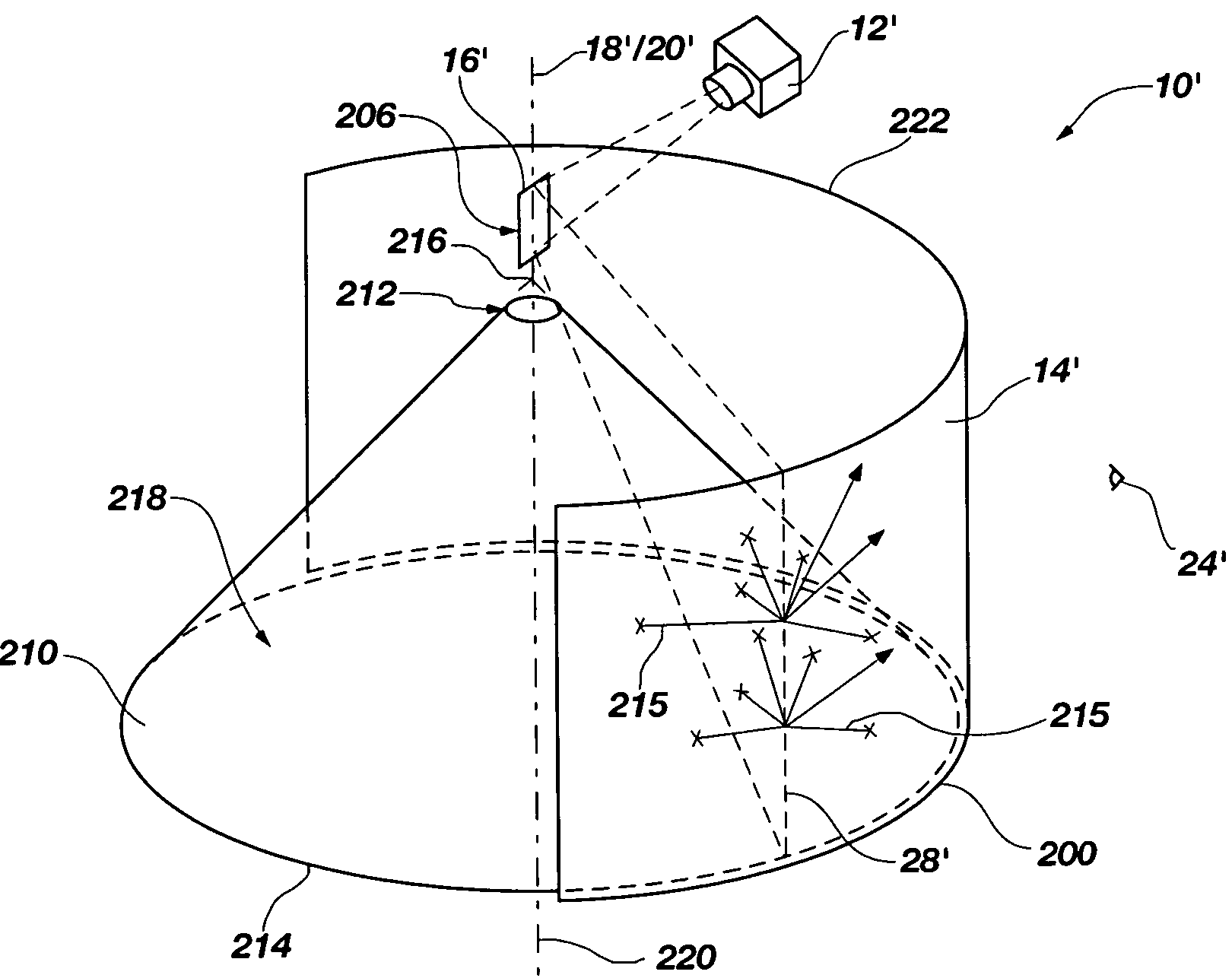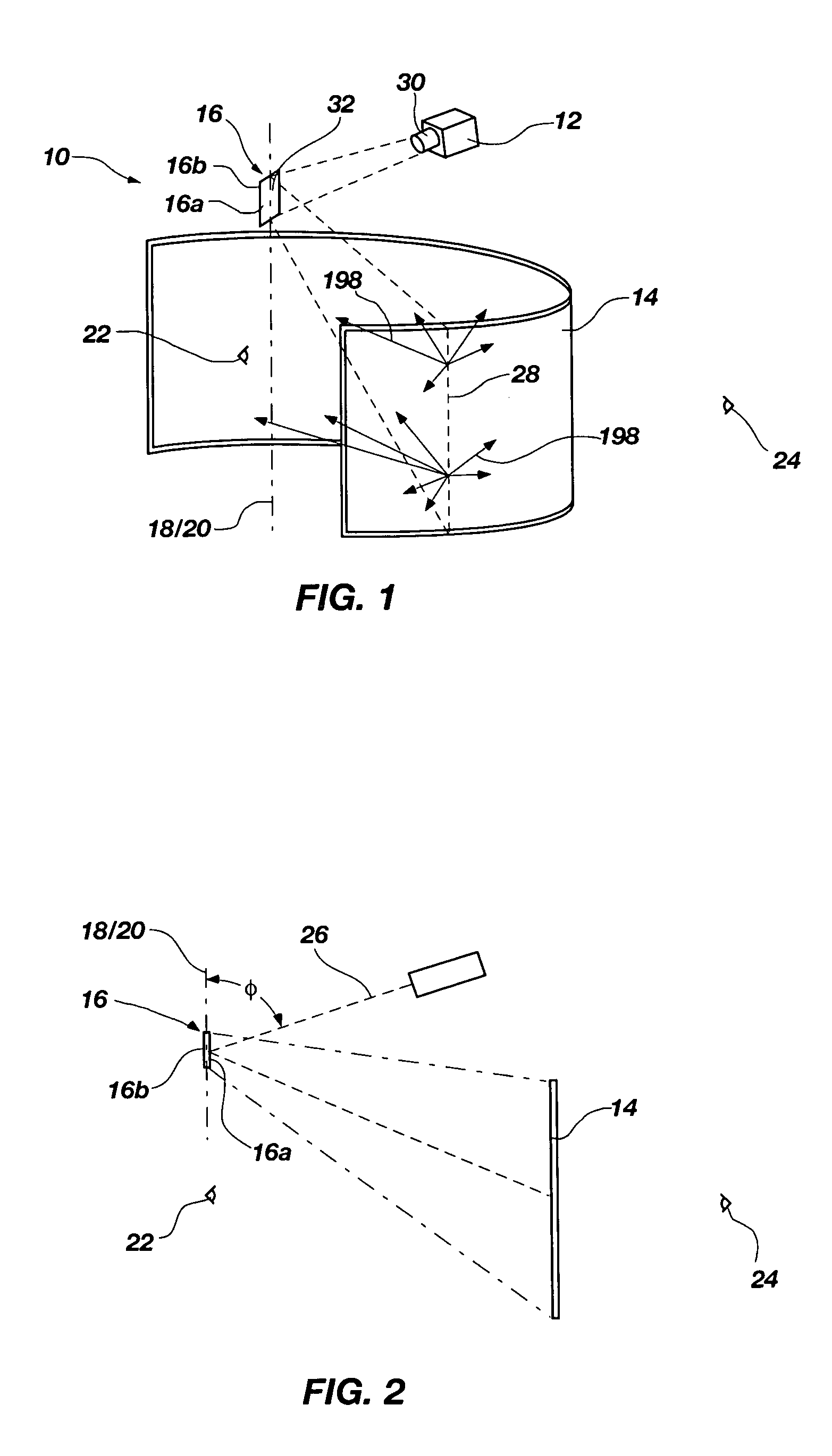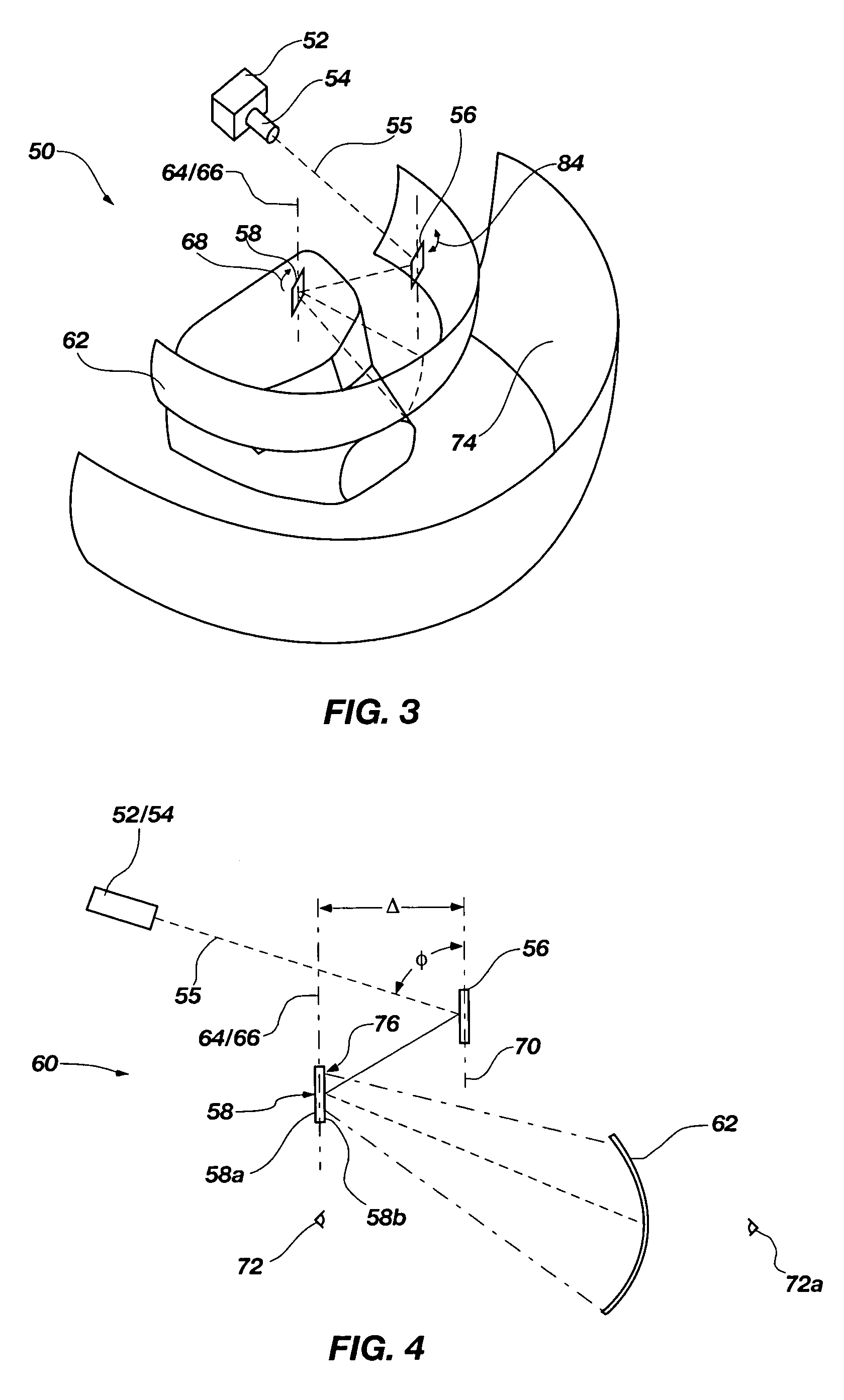Reflection barrier for panoramic display
a technology of reflection barrier and panoramic display, which is applied in the field of panoramic visual display system, can solve the problems of increasing difficulty, inability to completely hide the seams between images, and ineffective current methods for blending the edges of images from adjacent projectors, etc., and achieves no seams and good color matching
- Summary
- Abstract
- Description
- Claims
- Application Information
AI Technical Summary
Benefits of technology
Problems solved by technology
Method used
Image
Examples
Embodiment Construction
[0042]Reference will now be made to the exemplary embodiments illustrated in the drawings, and specific language will be used herein to describe the same. It will nevertheless be understood that no limitation of the scope of the invention is thereby intended. Alterations and further modifications of the inventive features illustrated herein, and additional applications of the principles of the inventions as illustrated herein, which would occur to one skilled in the relevant art and having possession of this disclosure, are to be considered within the scope of the invention.
[0043]The inventors have developed a new type of laser scanner for surrounding a viewer with a panoramic image. For purposes of this discussion, the terms “panoramic image” and “panoramic display” are used to refer to a display or image in which the horizontal dimension is much greater than the vertical dimension. It will be apparent that “horizontal” and “vertical” are relative terms. They do not refer to any pa...
PUM
 Login to View More
Login to View More Abstract
Description
Claims
Application Information
 Login to View More
Login to View More - R&D
- Intellectual Property
- Life Sciences
- Materials
- Tech Scout
- Unparalleled Data Quality
- Higher Quality Content
- 60% Fewer Hallucinations
Browse by: Latest US Patents, China's latest patents, Technical Efficacy Thesaurus, Application Domain, Technology Topic, Popular Technical Reports.
© 2025 PatSnap. All rights reserved.Legal|Privacy policy|Modern Slavery Act Transparency Statement|Sitemap|About US| Contact US: help@patsnap.com



